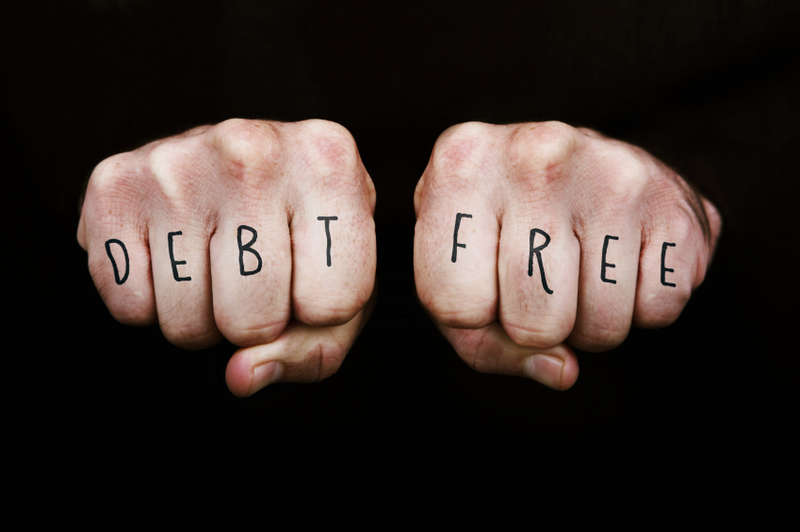Suppose you've made the required payments on all your loans and want
to use some extra money to pay off your debt quicker. How do you
choose which loan to pay off first?
There are two main strategies for accelerating the repayment of
debt. One involves paying down the loan with the highest after-tax
interest rate first. The other, popularized by Dave Ramsey as the
"debt snowball plan", pays off the loan with the lowest balance
first.
The snowball technique for paying down debt is only appropriate when
you lack the motivation to pay more than the minimum balance on your
loans. Tackling the loan with the lowest balance first will give you
measurable progress toward eliminating your debt because you will pay
off one of your loans sooner. Dave Ramsey argues that a "quick win"
will help keep you motivated to pay off all your debt.
But this strategy will keep you in debt longer and will cost you more
interest over the life of the loans as compared with the other
strategy. Watching your loan balance decrease should be enough to keep
you motivated.
Making extra payments on the most expensive debt first will minimize
the total interest paid over the life of all your loans. The most
expensive debt is the debt with the highest after-tax interest rate,
usually credit card debt and private student loans.
Consider two 10-year loans, a $10,000 loan with a 15% interest rate
and a $5,000 loan with a 5% interest rate. The required monthly
payments on the two loans total $187.85. If you do not make any extra
payments on the loans, the total interest paid over the 10-year term
will be $10,042.16.
If you follow the snowball plan and make an extra payment of $50 a
month on the smaller loan first, that loan will be paid off in 36
months and the second loan in 91 months. The total interest paid over
the life of the two loans will be $7,558.66, saving you $2,483.50. Not
bad.
But if you target the higher after-tax interest rate loan first, that loan will
be paid off in 73 months and the other loan in 88 months. Not only
will you have paid off all your loans sooner, but the total interest
paid over the life of the two loans will be $5,830.40, saving you
$4,211.76. Thus making the extra payments on the highest cost loan
first saves you an extra $1,728.26 as compared with the snowball plan.
Either method will save you money by paying off the debt sooner, but
targeting the highest after-tax interest rate loan for extra payments
first will save you more money.
Similar insights also apply to choosing whether to invest the extra
money or pay off debt quicker. If your after-tax return on investment
is higher than the after-tax interest rate on your most expensive
debt, you should invest the extra money instead of accelerating
repayment of your debt. For example, in most cases you should maximize
the employer match on your retirement plan contributions first because
the employer match is free money. On the other hand, if you are
earning 2% on a savings account and paying 14% on your credit cards,
you should use the savings (except for 3-6 months salary in an
emergency fund) to pay off the credit card debt. Paying off the credit
card debt will save you more money than you were earning in your
savings account because it will help you avoid paying the higher
interest rate on the credit card debt. Of course, you should do this
only if you can resist the temptation to run up the balance on your
credit cards again after you've paid off the debt. Cut up the credit
cards if necessary.
Some people argue that you should never accelerate repayment of very
low interest rate loans and instead should stretch out the repayment
term as long as possible. For example, borrowers of federal student
loans were able to lock in interest rates as low as 2.88% in May and
June 2005. These borrowers are unlikely to obtain such a low interest
rate ever again and can earn a better return on their money by
investing it. Still, there's a great sense of freedom from not owing
anybody anything. Sometimes the psychological boost of being debt-free
is worth the cost of the lost opportunity to squeeze a few more dollars
out of your personal finances.
You are the best judge of whether you need extra motivation to stick
to a repayment plan that pays off your debt sooner. But targeting the
highest interest rate loans for extra payments first will save you
money.
Student News
Fastweb's $1,250 Your Future is Now Sweepstakes Returns
Set a scholarship application goal, establish a habit of applying for scholarships, and enter to win a scholarship. Discover how to increase your chances of winning and learn how this scholarship helps you prepare for your future!
Popular
- 2026 – 2027 FAFSA Application Launching Soon, Plus New Changes
- Dr Pepper’s $100,000 Tuition Giveaway is Back
- How the Big Beautiful Bill Reshapes College Costs, Financial Aid, and Student Debt
- Step-by-Step Scholarship Application Checklist: What You Need to Apply Successfully
- Full-Tuition Scholarships
Latest
Join Fastweb.
Match Instantly.
Become a member and gain exclusive access to our database of over 1.5 million scholarships.
